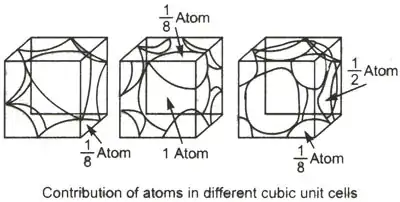I've been trying to understand Karma-kun's answer to the math problem in the Examination Finals.
I have searched for references and explanations for the problem but to no avail. I still couldn't understand the horrible explanations for the problem, and the answer assumes that you know their thought process is, which I don't.
This has an English translation of the problem:
The translated problem reads: “As shown in the diagram to the right, line segment A aligns itself periodically into a cube, and atoms are located at each vertex. Within, forming a uniform crystal lattice structure, Na, K, and other alkali metals attack the crystal lattice. Within the cube, focus on a certain atom A and within the points in the nearby space, let D represent the area that comprises the atoms closest to A. Find the volume of D.”
This is a better worded question that I found on mangahere in the tsukkomis. Credits to the writer: “A bunch of atoms surround Atom A. Imaginary lines of length (a) from the centers of the atoms form a cube around A. Find the volume Atom A takes up, if it has the same volume as all the atoms. Hint: use the volume of the cube.”
Another link I found mentioned the problem but not explaining it.
There is also a YouTube video that explains Karma-kun's answer but even with his explanation, I still can't understand how he came to the conclusion that the area of the center atom is equal to half the area of the cube divided by two. a^3/2.
The reason I'm posting this is that there is no other way for me to understand the problem without asking in a thread. I just want an explanation of the answer from a "high-school" level perspective, not a professional Ph.D. level one. I don't want to hear "equidistant", "infinitesimal", "vertex" or any other technical terms that I can't comprehend.
I know I demand too much, but please help me understand how Karma-kun got a^3/2. The only perspective that I got from Karma is that all 8 atoms form a cube of their own, and the middle point of that imaginary cube is equivalent to all the atoms inside the 8 individual cubes.
And the video says so as well, but how the in the world has it gone from A 1/8 to 2A? and then a^3/2
as shown here:

